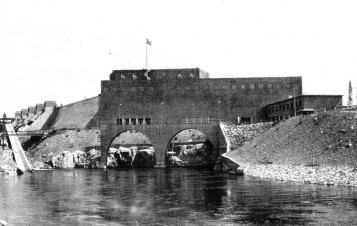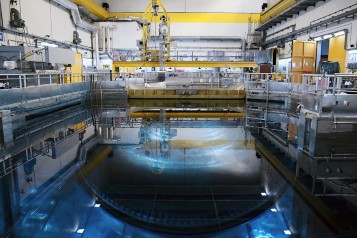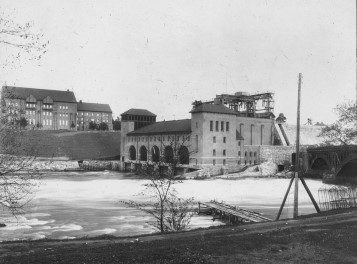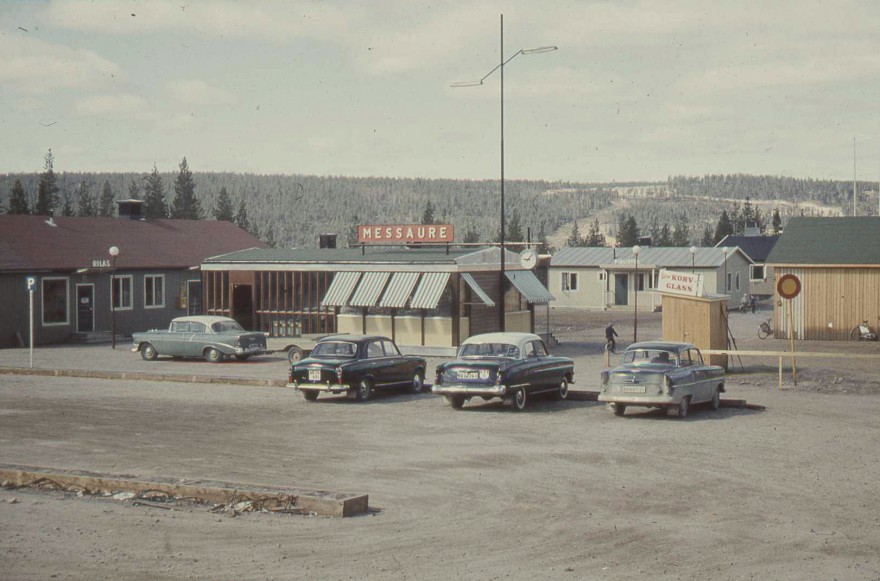
New communities in the wilderness
Many of the large hydropower plants were built in the wilderness. Construction required a huge workforce – for a limited time. This led to the rapid growth of new communities, which in most cases were dismantled once construction was complete.
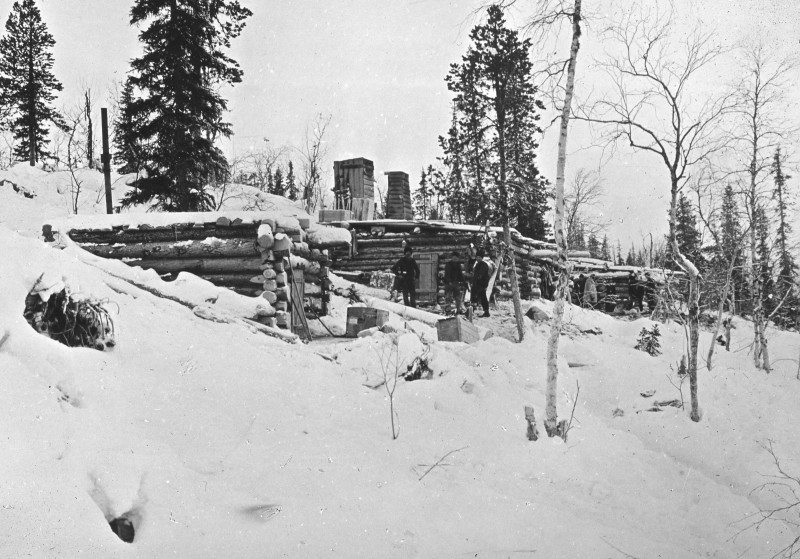
Workers' huts in Porjus. The huts beneath the workers' barracks in Porjus. Year: 1910 | Place: Porjus | Creator: Vattenfall | ID: VF000019
Vattenfall was a construction company right from the start, and it remained so until the 1980s. The construction of large power stations required hundreds, sometimes even thousands, of construction workers. Water navvies, as they came to be called. The plants were often built in the genuine wilderness, far from human habitation. As a result, new communities sprang up around these building sites.

Workers' barracks in Porjus. Year: 1921 | Place: Porjus | Creator: Vattenfall | ID: VF000020
The first power plant construction project in the wilderness was Porjus, Vattenfall's first power plant in the northern region of Norrland. Construction began in 1910, and for some years Porjus was one of Sweden's largest workplaces. Conditions in this construction community were very primitive. Initially, most of the over 300 employees lived in simple huts and sheds. Vermin was just one of the sanitation problems. Vattenfall was criticised for the extreme poverty and the company started its own extensive building programme. One year later all the employees – now numbering almost 700 – were living in barracks and the huts were torn down. In addition to workers' barracks, canteens, offices, an officers' mess, medical centre, police station, and bathing and washing facilities were all constructed – a brand new community.
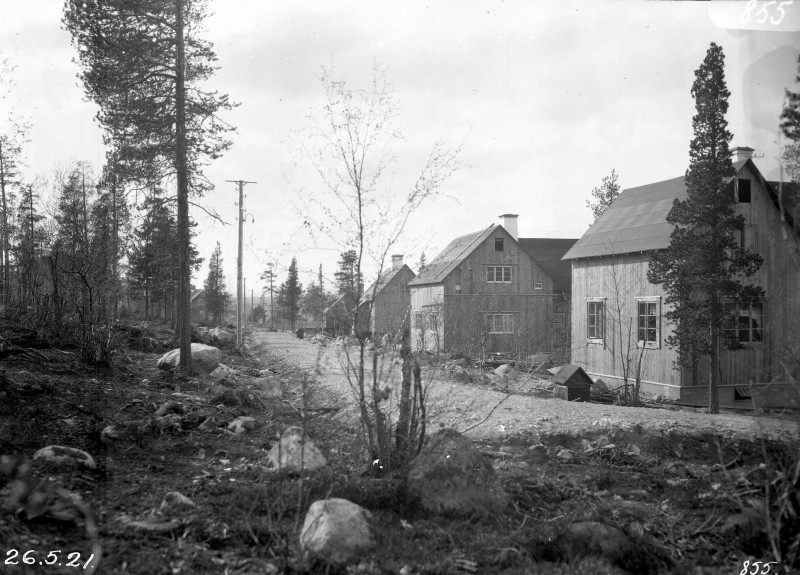
The new Porjus. The Kåtan block, at the crossing of Turist street and Lillsele street. Year: 1921 | Place: Porjus | Creator: Vattenfall | ID: VF000018
These new temporary communities were primarily built between the 1930s and the 1960s, during the heyday of the expansion of hydroelectric power. Some of the larger communities constructed, which emerged during the 1950s, were Midskog (1,700 inhabitants), Harsprånget (2,100), Kilforsen (1,500) and Messaure (2,300). Service functions such as shops, postal services, schools, a medical centre, various types of offices, a petrol station and kiosk were established for the communities. Sports facilities, a church, and meeting halls for films, dances and sometimes theatre were also built. Today Messaure, and the other communities, have been completely dismantled and the forest has reclaimed the land.
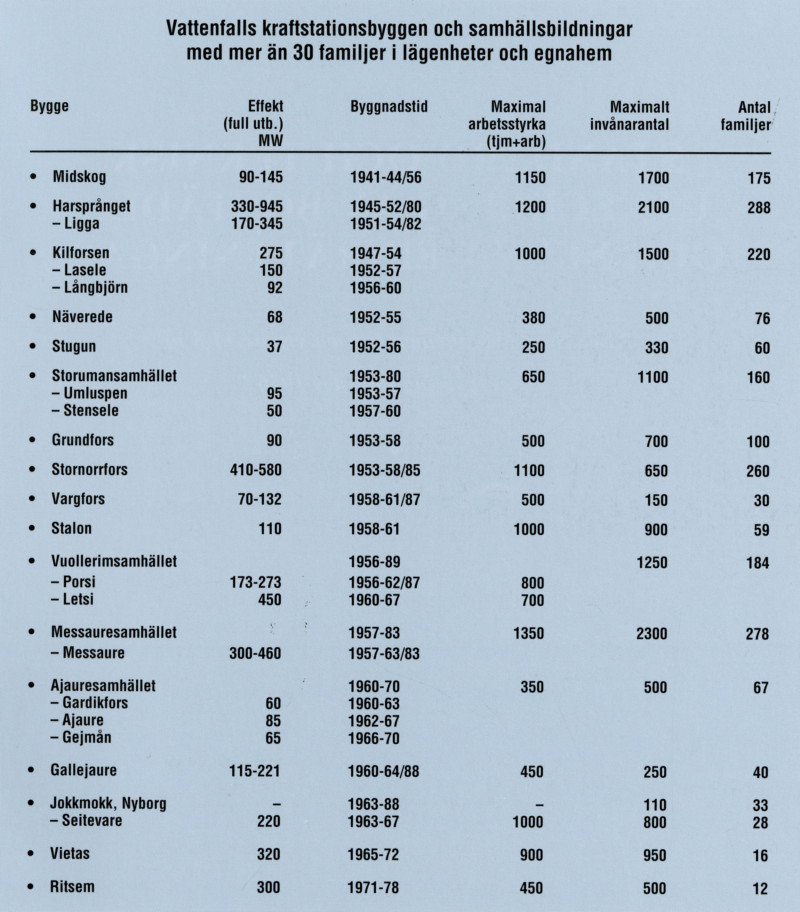
A chart depicting power station construction communities with more than 30 families in apartments or separate homes. From the book 'Från bygge till bygge: anläggarnas liv och minnen'. Year: 1994 | Place: - | Creator: Okänd | ID: VF001026
Construction communities were male-dominated. Most of the construction workers were men. But Vattenfall also employed women as clerks, cooks, cleaners and other office staff. The shops, schools and other facilities in the communities also employed women.
In addition, many individual homes were built to enable workers to live with their whole family – although they were far from luxurious. Many housewives also ensured that the gender ratio improved slightly and the children later testified about the sense of security they felt, as there was always someone at home. Although those communities were simply constructed, the Swedish Institute for Building Research considered Vattenfall a role model when it came to developing temporary communities.
Social position governed accommodation
The strict social hierarchy of the period was reflected in accommodation. The standard and type of home an employee was allocated depended on his profession. For example, in Messaure (1957–80) there were six different types of homes in different parts of the community. Unmarried men lived in barracks. The rooms, opening off a central corridor, were 11 m2 and shared by two people. There was a shared washroom on the short side of the barracks. Each barracks had a cook who lived in her own 7 m2 room. Some workers were allocated land by Vattenfall where they themselves could build their own home for their entire family. Vattenfall dealt with the purchase of houses and organised a loan for the home owner, who, once construction of the power plant was complete, took the house to the next workplace. Family homes were built primarily for officials. But even officials lived in a sort of barracks, which was linked to the officials' mess. These, just like the unmarried barracks, had a corridor running down the middle, but the rooms were larger and only one person lived in each room.

Temporary housing at Messaure. Year: 1958 | Place: Messaure | Creator: Lennart Nilsson | ID: VF000022
In the mid 1960s, these temporary communities out at the building sites were stopped and were partially replaced by daily and weekly commuting. One exception to this was the construction of the nuclear power plants at Ringhals and Forsmark. For various reasons, Vattenfall was forced to rush construction of Ringhals, which ruined all the calculations for staffing and associated accommodation. The barracks that were built were often of a low standard and two workers often still shared the same room. When Forsmark was built, between 1971 and 1985, the dividing line between officials and workers had finally disappeared. In the barracks, each employee had 23 m2 at their disposal. In addition, an increasing number of construction workers had started to bring their own caravans.
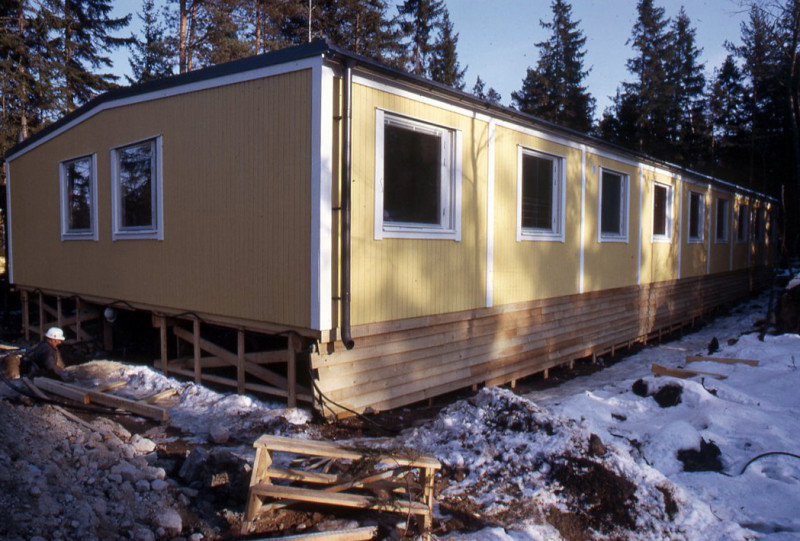
Construction community around the Forsmark power plant. Year: 1971 | Place: Östhammar | Creator: Vattenfall | ID: VF000023
Raid in Vietas
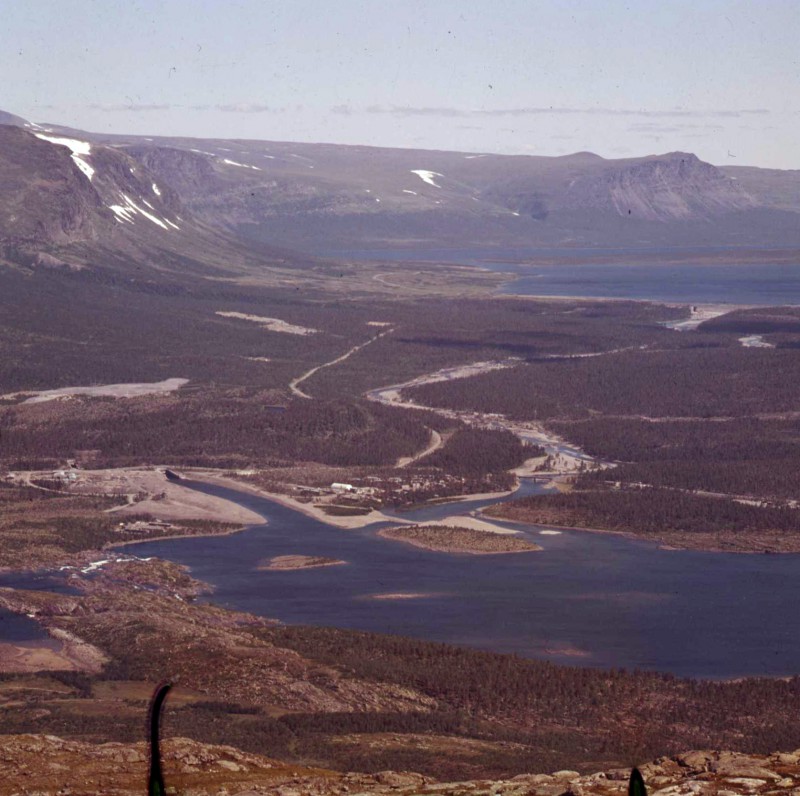
The Vietas hydro power station. Year: 1970 | Place: Vietas | Creator: Vattenfall | ID: VF000024
There are many colourful stories about life in these construction communities. One of them takes place in Vietas, which was in existence between 1962 and 1972. It was there in early spring 1971 that a spectacular payroll theft took place. The incident received a lot of attention, both in Sweden and abroad, and was named the Vietas Raid. In today's money, the proceeds of the robbery would correspond to SEK 3.2 million. The money was never found, nor were the perpetrators. The safe which had contained the payroll had been broken into from underneath. Memories of the raid live on in the district. There are many people who claim to know who the perpetrators were. One of them is Swedish author Mikael Niemi, who wrote a play about the incident.
Video player requires marketing cookies.
To view this content please click here to allow marketing cookies.
Leisure time for water-navvies (in Swedish)

